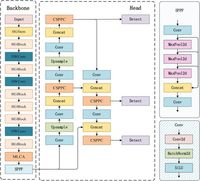In a major leap for power system maintenance, researchers have unveiled a new algorithm called AHC-YOLO, aimed at revolutionizing the detection of hydrophobicity levels in composite insulators. This state-of-the-art approach integrates modern imaging and artificial intelligence techniques to ensure that utility companies can maintain operational reliability in their power transmission systems.
Composite insulators, made of materials like glass fiber-reinforced epoxy resin and silicone rubber, are crucial components in modern power grids due to their lightweight nature and excellent performance under varying environmental conditions. However, due to age and environmental factors, these insulators can suffer degradation, which can compromise their hydrophobicity—their ability to resist water penetration on their surface. Monitoring this property is essential, as it directly influences the performance of the insulators and ensures they effectively handle high-voltage operations.
The development of the AHC-YOLO algorithm, a variant of the well-known YOLOv8 model, seeks to address the challenges utility companies face in performing accurate assessments of insulator conditions. As highlighted in a study published recently, the AHC-YOLO improves detection accuracy of insulator sheds by 5.77%, while also significantly reducing computational demands, achieving an impressive GFLOPs rate of 5.8.
Researchers have noted that conventional methods for evaluating insulator hydrophobicity, such as contact angle and water spray grading techniques, typically require precise laboratory settings and manual interventions. These limitations prompted a need for a more automated, efficient solution capable of operating within real-world environments. The AHC-YOLO algorithm has emerged as a solution, combining a high-performance GPU network (HGNetv2) with a mixed local channel attention (MLCA) mechanism, lightweight convolution (CSPPC), and the innovative Inner-WIoU loss function.
The high-performance backbone, HGNetv2, is designed to efficiently handle multi-label classification and object detection tasks, providing robust feature extraction capabilities critical for identifying the state of insulators in challenging settings. This enhancement allows the AHC-YOLO model to maintain high accuracy while significantly reducing computational load, thus making it suitable for deployment in edge devices like drones.
Part of the innovation lies in the introduction of the MLCA mechanism, which shifts focus to the insulator sheds themselves within complex image backgrounds, a common issue faced in practical applications. Additionally, the use of lightweight convolution structures minimizes the processing burden by optimizing data flow, ensuring that only relevant features are computed, increasing overall efficiency.
With the AHC-YOLO algorithm, researchers adopted a two-step process that first detects the presence of insulator sheds and subsequently classifies their hydrophobicity levels. This systematic approach allows for precise inspections and timely evaluations of insulator conditions, which are vital for the safety and reliability of all electrical infrastructure.
In experimental results, the algorithm demonstrated top accuracy improvements, with Top-1 accuracy rising by nearly 5% for hydrophobicity classification. The study analyzed 7960 images taken from various field conditions, all aimed at ensuring a balanced dataset that accurately reflects the realities of operational environments.
Moreover, the integration of deep learning means that the algorithm can learn and adapt from the data it processes, continually refining its recognition capabilities over time. As confirmed by experimental tests, the AHC-YOLO outperformed several existing models, achieving a mean Average Precision (mAP) from 0.867 to 0.917, while maintaining a low GFLOPs value, underscoring its efficiency.
Overall, AHC-YOLO signals a significant advancement in insulator monitoring technologies. By bridging the gap between manual and automated inspections, the algorithm addresses critical challenges faced in ensuring power system safety. As it becomes further refined and deployed, it holds the potential to enhance operational standards and maintenance protocols across the industry, safeguarding the reliability of power transmission systems into the future.




